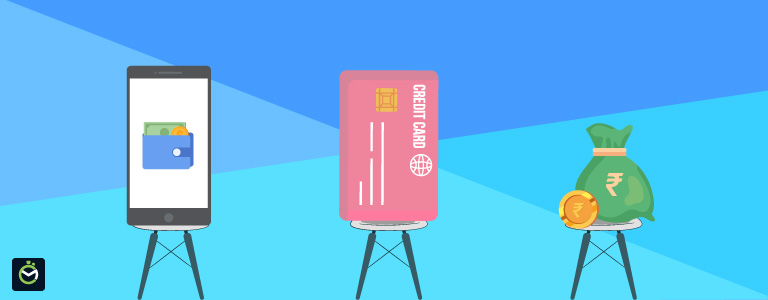The recent surge in e-commerce platforms has encouraged consumers to opt for digital payments modes to pay for their necessities and wants. Digital currency is no longer limited to debit and credit cards; there are now EMI Cards and Buy Now Pay Later (BNPL) credit accounts.
The application process for these digital payment methods is quick and convenient. Consumers can apply and get one of these payment methods from the comfort of their homes. E-commerce companies shower buyers with additional discounts and offers, when they opt for a BNPL option or an EMI card from them, only encouraging the consumers more to opt for these payment options.
So, which of these payment methods is beneficial for you? How to decide which one to get? Here are some pros and cons of each payment method to consider while you are shopping for your next digital payment option.
Credit Cards
PROS
- Credit cards come with a high credit limit. The credit limit is based on your salary. Banks will offer a credit limit that is up to 3 times your gross monthly salary. The credit limit is also fixed depending on your credit score and other loans. The assigned credit limit makes it possible to have a large amount available at your disposal every month.
- There is an option to pay a part of the total bill. If you are juggling your finances between different loans, you can choose to pay just the minimum amount due on your credit card bill and pay the rest at a later date.
- You can pay your bill from different sources, like two different bank accounts.
- It is not mandatory to set up auto-debit from your savings account for the monthly bills.
- Credit cards come with various other value adds like a rewards program, cashback, airport lounge access and other luxury benefits.
CONS
- Credit cards come with steep interest rates. The APR is somewhere around 35-40%. If not used carefully, credit cards can lead you into a debt trap.
- Though you can make a partial payment, the interest rates pile on quickly doubling or tripling, the total amount you owe to the bank.
- There are also other charges like late payment charges or cash advance charges that are very high.
- You may also have to pay joining fees and annual fees for your credit card if you want to enjoy some of the value-added
Buy Now Pay Later (BNPL)
PROS
- BNPL is a deferred payment option. It gives you some time to pay for the purchases you made. You usually get up to 50 days to pay for the purchases.
- A BNPL account is linked to your bank account and the monthly payments are automatically debited on the due date. You won’t be missing any payments.
- This is usually issued by an e-commerce company like Amazon, Flipkart or MakeMyTrip.com; you get additional discounts for using the BNPL account to make purchases on an e-commerce platform.
CONS
- You have to link your bank account to your BNPL for auto-debit of the monthly payments. So if there is insufficient balance in your debit account, this will result in interest charges, and also incur auto-debit fail charges in the bank.
- BNPL accounts are usually linked to the issuer platform so you cannot use them on other platforms.
- The credit limit is linked to your savings account and the average monthly balance you maintain there. So you may not get a very high credit limit.
- There are no value-added benefits you get with a BNPL account; like a rewards program, airport lounge access or fuel surcharge waiver offers.
EMI Cards
PROS
- EMI Cards are issued mostly by NBFCs. Bajaj Finserv EMI Card is a popular one in this segment.
- It allows you to purchase consumer durable goods using an EMI card that is approved and issued to you based on your salary and credit score.
- You can use the card to pay for purchases and convert the purchase into comfortable EMIs instantly.
- These EMI cards generally come with a 0% interest. You just have to bear the processing fee for every transaction.
- Even if there is an interest rate, it is similar to credit card interest rates
CONS
- EMI Cards can be used in selected outlets only. They are generally allowed to be used for the purchase of consumer goods like electronics, clothing and other household items.
- The 0% interest option is not available with all merchants. They may ask you to make a down payment and put the rest on your EMI card.
- EMI cards are not accepted by all e-commerce platforms. This makes their usage limited.
What Suits You Best?
Now that you have seen the pros and cons of all three payment options, you have to compare them based on your spending habits. List out your most common expenses in a month and find out which option will give you the maximum benefit.
Here’s a quick summary of what we have seen so far.
- Credit cards are based on your salary and credit score so they come with higher credit limits and a 30 to 45-days repayment period. They can be used online as well as offline at merchant outlets.
- Buy Now Pay Later accounts are usually based on your bank account and won’t have a very high credit limit. They generally have a 50-day repayment time. But BNPL accounts are generally linked to the vendor or e-commerce platform that issues them and cannot be used on other platforms.
- EMI cards are usually issued based on your credit score. They are similar to your credit card but have a limitation on where they can be used. They are commonly available for use in the consumer goods category.
Read the pros and cons to find the right card that best fits your needs.

